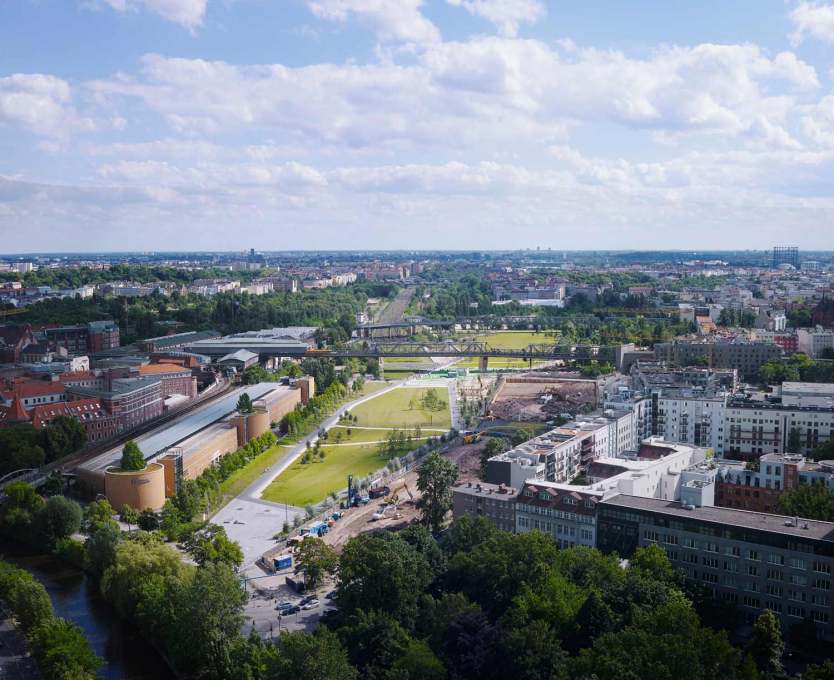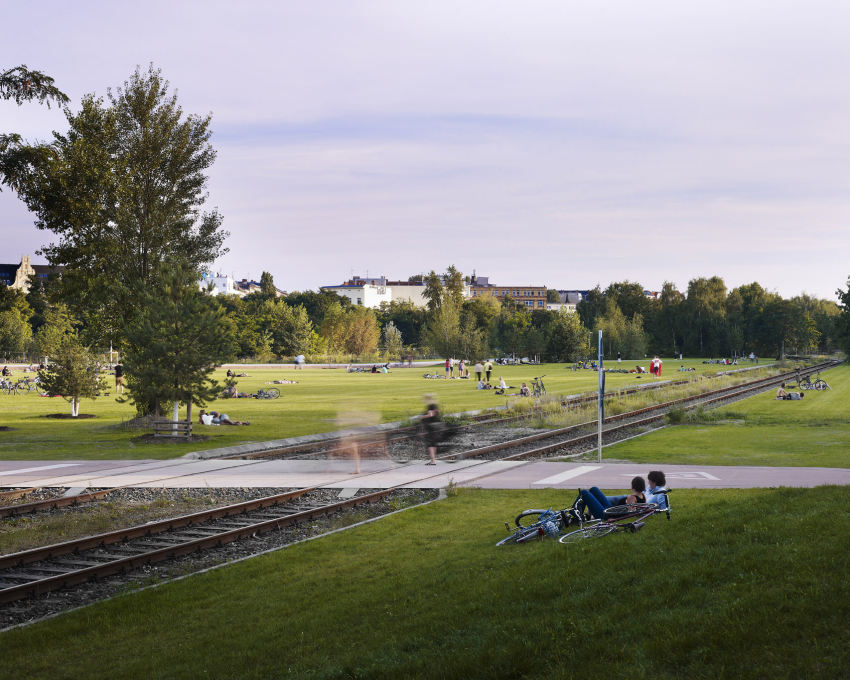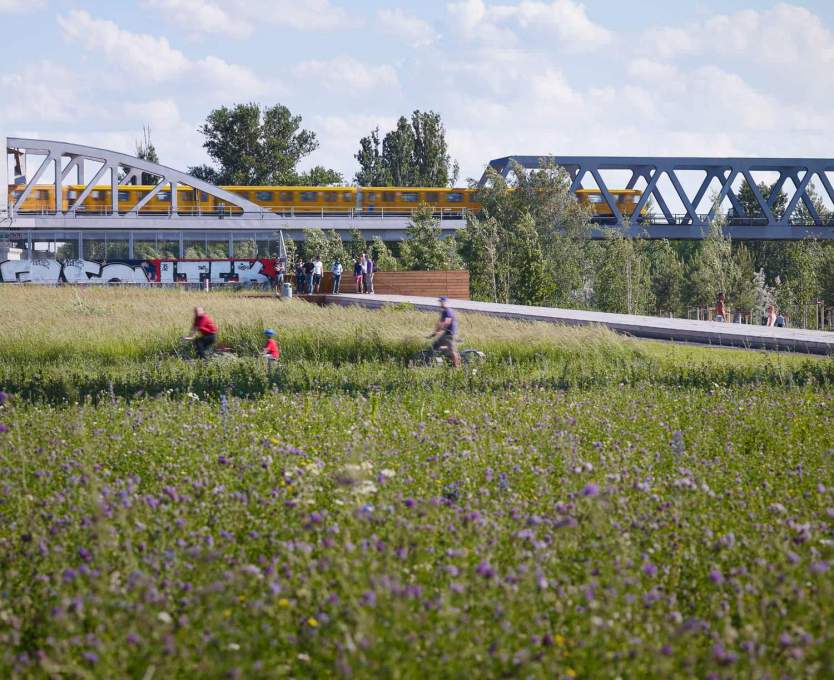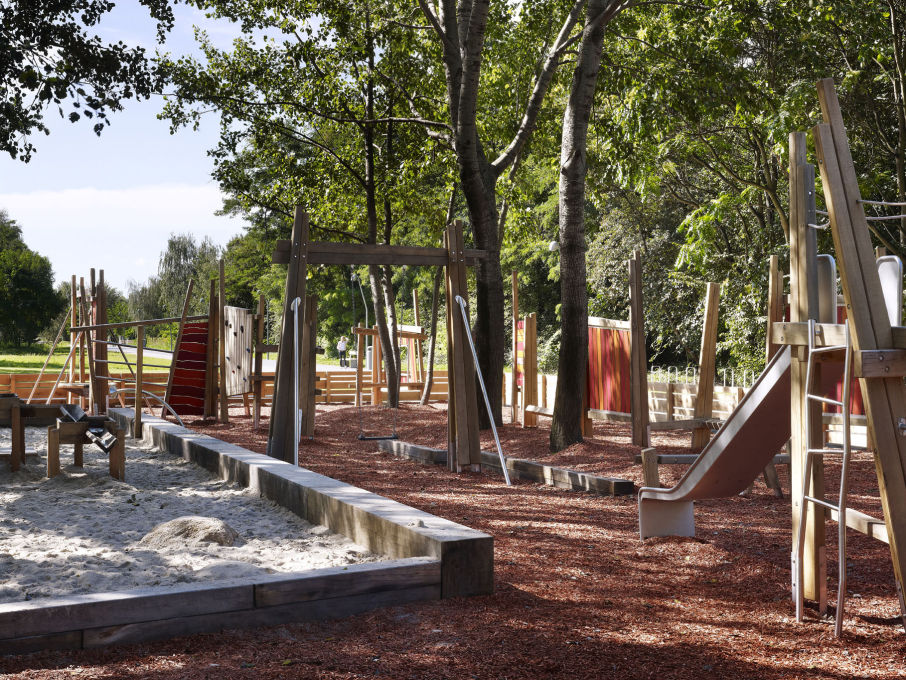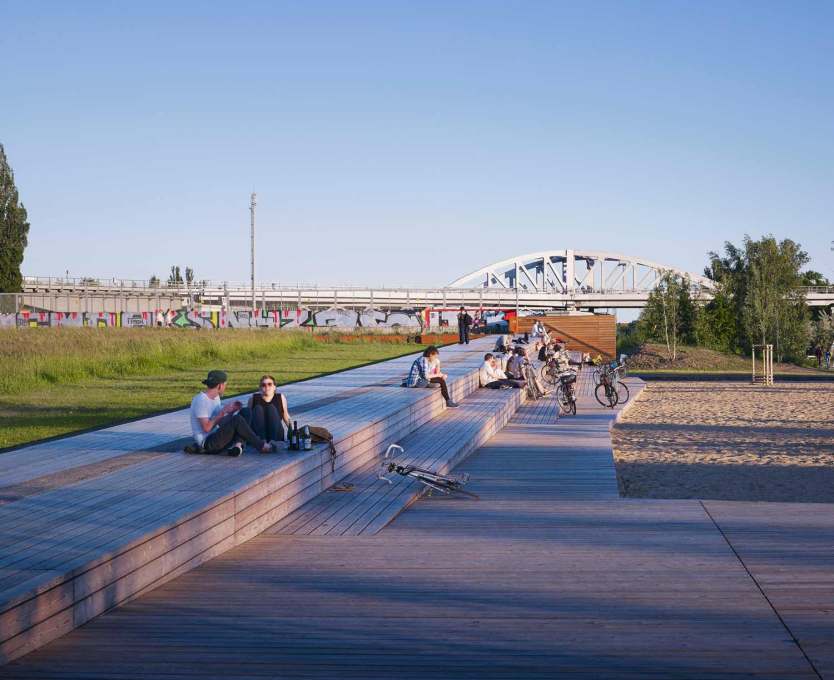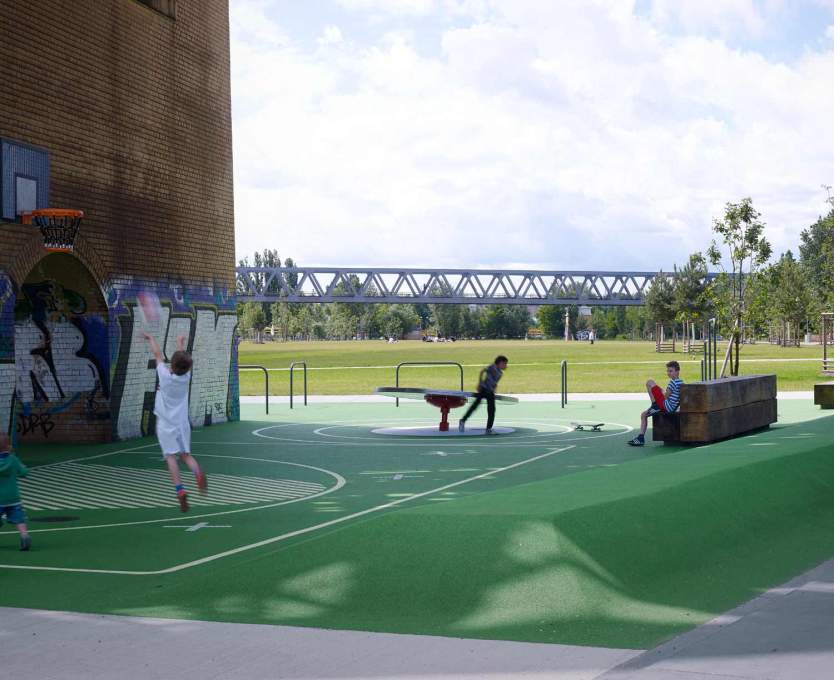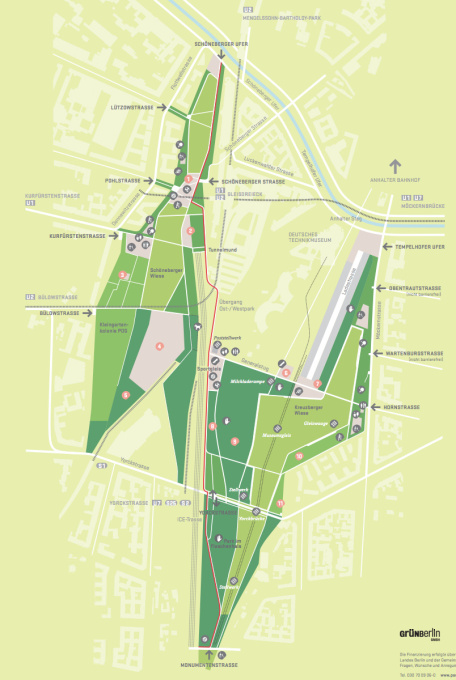With the completion of the western part of Park am Gleisdreieck, Berliners now have a huge new recreational space to enjoy. Jessica Bridger considers this new space in the city, one originally opened up by wartime destruction, and asks: would a little more constructive destruction be good for our cities?
This building of the week will take building as a verb and destruction as a prerogative. Berlin’s Park am Gleisdreieck is the last large urban open space to be developed since German reunification in 1990. The park is an excellent example of urbanism: it engages multiple aspects of the city, adding a vibrant new space full of delicious design details, like hardwood seating, graphics inlaid into concrete paths – and fully functional spaces, including playgrounds, a skate-park, tennis courts, varied wild habitats, even a rose-scent garden. It is easy to wax enthusiastically about the project; the two-phase design was completed this summer by Berlin landscape architecture office Atelier Loidl, and it is masterful – as would be hoped with a 36-hectare urban park in the center of the city. Anything else would constitute a shameful failure, as parks tend to endure longer than most buildings. We have to live with what we build.
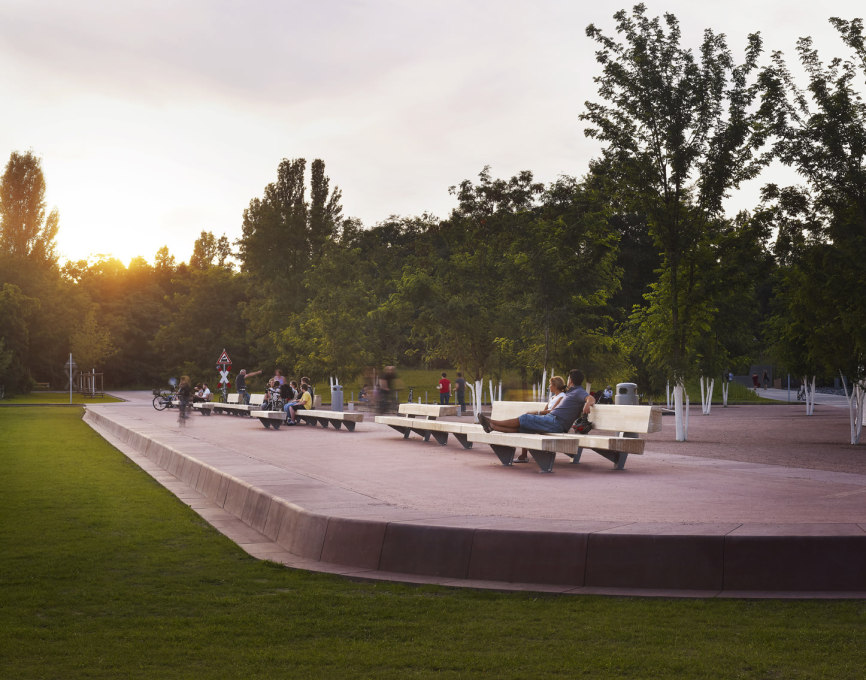
Yet what is perhaps the most interesting thing about the park for uncube is what allowed it to be built in the first place, and why we could take a deeply cynical stance toward the catalysts needed for a new kind of reformation of urban spaces, which will become ever more pressing with growing urbanization. Some of the finest urban openings for new ideas over the past half-century have been the fall-out from processes of destruction: war damage, the collapse of economic or political systems, catastrophic geophysical and climatic events. While such events often result in new space ripe for planning, there is always a need to acknowledge – and avoid – the devastation that often accompanies destruction.
Gleisdreick is the resolution of one part of the desolation wrought on Berlin by World War Two and the division of Germany. Its site at the center of the city, created by the convergence of major urban and long-distance transit lines, made it a particularly nice target for bombers. The area around Gleisdreieck was decimated during the war, and remained relatively unreconstructed in the subsequent era of a divided city. This destruction and the schizophrenic time that followed made the city beautiful years later, as vacant lots became urban wilds (the field of urban ecology was partially founded in Berlin). Reunification and the urban processes that followed brought development, people, and life back to areas of the city formerly rendered bleak, grey, and hard. From destruction and neglect grew something beautiful in the urban realm.
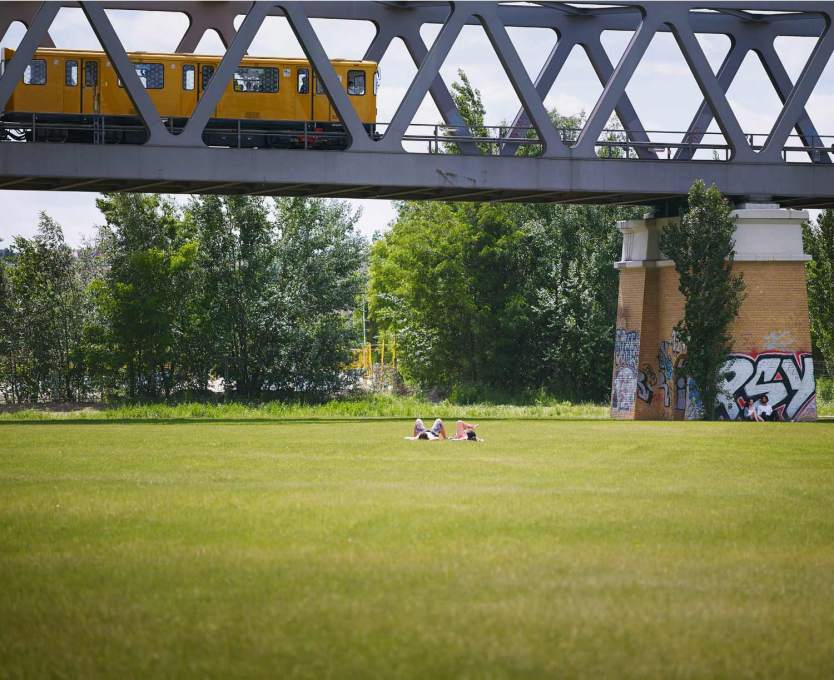
That’s how we get to a central question that we don’t often get to ask: why not tear it down, rip it up, take it all away? While the urban renewal projects of the mid-twentieth century were often disasters in urbanism writ large, times have changed. People are returning to cities. Chances like Gleisdreieck, where such a large open space was created by catastrophe and turned into a public amenity, are rare. But our cities need these spaces, long called green lungs, to breathe. Urban lifestyles are rich and varied but living in cities is stressful as crowds crowd, neighbors infuriate and life just drags you down. But we can be redeemed in our parks, in our public open spaces, where, if only for an hour, life – fantasy even – opens out to us as we relax in the lush grass, listening with our ubiquitous white headphones to music, forgetting our considerable worries.
Where the very urban fabric is ripped and rent, and excellent park projects like Park am Gleisdreieck are built, we can see that perhaps cultivating a healthy appetite for destruction would allow the building of better urban forms, making nicer cities. In Guns-n-Roses’ seminal first album, Appetite for Destruction, Axel Rose expresses a fear about his urban situation: 1980s Los Angeles. Songs like Welcome to the Jungle or Paradise City express a scary vision of urban life. To Rose, he begged to go to “the paradise city / where the grass is green / and the girls are pretty” clearly an alternative to his reality, and quite possibly heaven or Zurich, depending on where your faith lies. Appetite for Destruction, though, does offer something ameliorative: by tearing through things, perhaps redemption or relief is possible? Plans to accommodate the growth of urban populations, projected to be 75 percent of 9 billion people by 2050, focus on infill and new settlements. Perhaps we need to add the discussion of a little bit of destruction to the cacophony.
– Jessica Bridger




